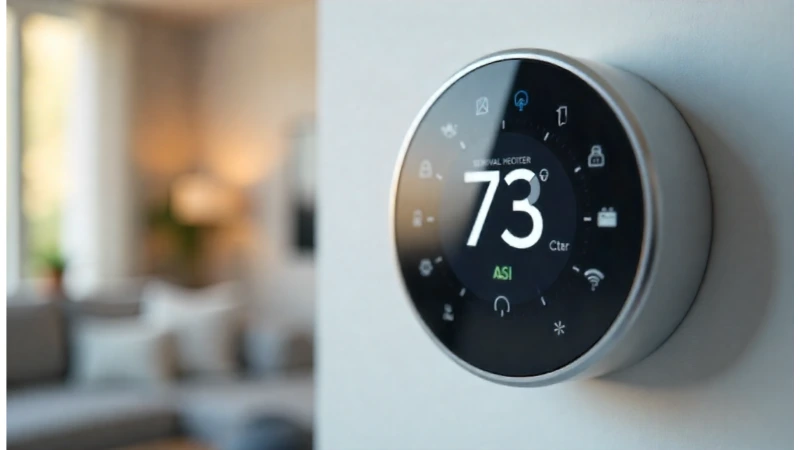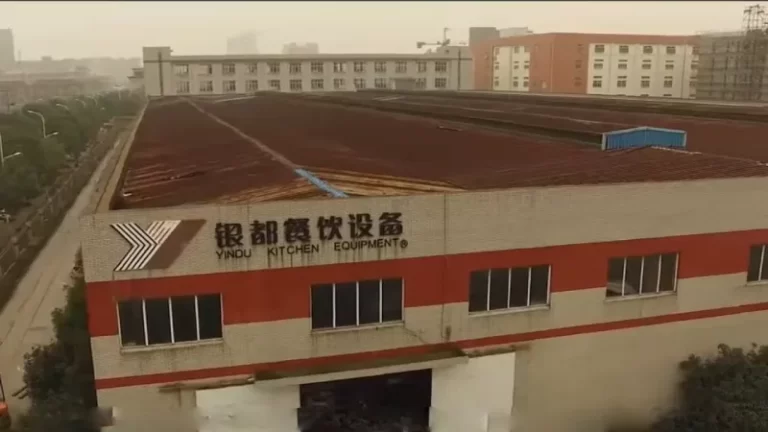Is Your Electric Wall Heater Haunted? Why It Turns On By Itself
It’s late at night, the house is quiet, and suddenly you hear it – the distinct click and whir of your electric wall heater turning on. You know you turned it off, so what’s happening? Before you call ghost hunters, understand that you’re not alone in this perplexing and sometimes costly situation.
Many homeowners experience their electric wall heaters activating seemingly on their own. This phenomenon, often called “phantom cycling,” can be unsettling and lead to higher energy bills. Fortunately, the reasons are usually grounded in electrical and mechanical issues, not the supernatural.
You'll Learn About
The Prime Suspect: A Faulty Thermostat
The most common culprit behind a self-activating electric wall heater is the thermostat. This small device is the brain of your heating system, telling it when to turn on and off to maintain your desired temperature. When it malfunctions, it can send incorrect signals to the heater.
A faulty thermostat might be inaccurately reading the room’s temperature, causing it to power the heater at random intervals. This can happen due to old age, dust accumulation inside the unit, or faulty wiring creating erratic connections.
Thermostat Location and Calibration Issues
The placement of your thermostat can also be a significant factor. If it’s located near a drafty window, an uninsulated wall, or even in direct sunlight, it can get false temperature readings. An external cold draft might trick the thermostat into thinking the room is colder than it is, triggering the heater unexpectedly.
Furthermore, older mechanical thermostats can lose their calibration over time. The internal components may no longer accurately correspond to the temperature settings on the dial. This discrepancy can lead to the heater turning on even when the set temperature has been reached.
Unraveling the Mystery of “Short Cycling”
When your heater turns on and off frequently in short bursts, it’s known as short cycling. This is a clear sign that something is wrong. Short cycling not only wastes energy but also puts excessive wear and tear on the heater’s components, potentially leading to premature failure.
Several issues can cause short cycling, ranging from simple fixes to more complex electrical problems. Understanding these can help you pinpoint the source of the problem and find a solution.

Blocked Airflow: A Common and Simple Fix
Your electric wall heater needs clear, unobstructed airflow to function correctly. If furniture, curtains, or other objects are blocking the vents, it can cause the unit to overheat. As a safety measure, the heater will shut off to prevent damage.
Once it cools down, it may turn back on, only to overheat and shut off again, creating a continuous cycle. Simply ensuring there is adequate space around your heater for air to circulate can often resolve this issue.
Overheating from Dust and Debris
Over time, dust, pet hair, and other debris can accumulate inside your wall heater, particularly on the heating elements and fan. This buildup acts as an insulator, trapping heat and causing the unit to overheat. Just like with blocked airflow, the heater’s safety features will kick in, causing it to short cycle.
Regularly cleaning your wall heater is a crucial maintenance step to prevent this problem. A simple vacuuming of the vents and internal components can make a significant difference.
Diving Deeper: Electrical Gremlins
If you’ve ruled out thermostat issues and airflow blockages, the problem might lie within the heater’s electrical system. Wiring problems can be dangerous, so it’s essential to approach these with caution. If you are not comfortable working with electricity, it’s always best to call a qualified electrician.
Loose connections are a common electrical fault. Over time, vibrations from the heater’s fan can cause wires to become loose. This can create an intermittent connection that causes the heater to turn on and off unpredictably. Checking and tightening these connections, after shutting off the power at the circuit breaker, can solve the problem.
Faulty Internal Components
An electric wall heater contains several key components, including the heating element, a limit switch, and the fan motor. A malfunction in any of these parts can lead to erratic behavior. The high-limit switch, a safety device that prevents overheating, can become faulty and trip prematurely, causing the heater to shut off and restart.
If you’ve noticed your heater acting up, especially if it seems to be related to the electrical system, it’s a good idea to inspect the internal wiring. For instance, understanding water heater conduit wiring can give you an idea of how these systems are protected, which is a principle that applies to wall heaters as well.
A Step-by-Step Troubleshooting Guide
Feeling overwhelmed? Don’t be. Here is a clear, step-by-step guide to help you diagnose and potentially fix your misbehaving electric wall heater. Always remember to turn off the power to the heater at the circuit breaker before performing any inspections or repairs.
Start with the simplest solutions first and work your way to the more complex ones. This methodical approach will help you isolate the problem efficiently and safely.
Initial Checks and Simple Fixes
First, check the thermostat settings. Ensure it’s not set to a “fan” or “auto” mode that might have different cycle settings. If you have a digital thermostat, check the owner’s manual for specific settings that might cause frequent cycling.
Next, clear the area around the heater. Make sure there is at least a few feet of clearance to allow for proper airflow. Then, with the power off, thoroughly clean the unit, removing any dust and debris from the grill and the interior.
Intermediate Troubleshooting Steps
If the simple fixes don’t work, it’s time to look at the thermostat more closely. Consider recalibrating it if it’s a mechanical model or replacing the batteries if it’s digital. If you suspect the thermostat is faulty, replacing it is a relatively inexpensive and straightforward task for a DIY-savvy homeowner.
While you have the power off, you can also remove the heater’s cover and visually inspect the wiring for any loose connections. Gently tug on the wires to ensure they are secure. If you see any signs of frayed or burnt wiring, this is a serious issue that requires a professional electrician.
| Problem | Potential Cause | Solution |
|---|---|---|
| Heater turns on and off randomly | Faulty Thermostat | Recalibrate or replace the thermostat. |
| Heater cycles on/off frequently | Blocked Airflow | Move objects away from the heater vents. |
| Heater overheats and shuts down | Dust and Debris | Clean the heater’s interior and vents. |
| Heater operation is erratic | Loose Wiring | Turn off power, then check and tighten connections. |
| Heater shuts off unexpectedly | Faulty High-Limit Switch | Call a professional for testing and replacement. |
When to Call a Professional
While many causes of a self-activating wall heater can be addressed with simple DIY fixes, there are times when you absolutely need to call in a professional. If you smell burning plastic or see sparks, shut off the power at the breaker immediately and call an electrician.
Complex electrical issues, such as a faulty heating element or a malfunctioning limit switch, require the expertise and specialized tools of a qualified technician. Trying to fix these issues yourself without proper knowledge can be dangerous and may lead to further damage or even a fire hazard. Issues with other types of heaters, like a propane heater that flares up, also demand professional attention due to safety risks.
Considering a Replacement
If your electric wall heater is old and has been malfunctioning frequently, it might be more cost-effective to replace it. Modern electric wall heaters are more energy-efficient and come with advanced safety features and more reliable thermostats. A new unit can provide peace of mind and lower your energy bills in the long run.
In some cases, the location of heating appliances is the issue. For example, some homeowners may look for ideas on how to hide a furnace and water heater in a garage, but it’s crucial to ensure proper ventilation and safety clearances, which is also true for wall heaters.
Preventative Maintenance for Peace of Mind
The best way to deal with a misbehaving wall heater is to prevent problems before they start. Regular maintenance is key to ensuring your heater operates safely and efficiently. Make it a habit to clean your heater at the beginning of each heating season.
Periodically check the thermostat to ensure it is functioning correctly and inspect the area around the heater for any obstructions. These simple steps can extend the life of your heater and prevent those startling moments when it seems to have a mind of its own.

